

of les CLOUZEAUX
![]()
The bamboo is a grass from the graminaceae family (like wheat and corn). It includes a root (rhizome) and a stalk (roof) with branches and leaves.
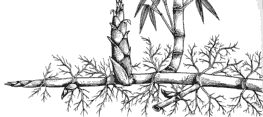
From Asian origin (China), it is now found in all of the world's regions. It has adapted itself even in the most rigorous climates such as tropical climate. It was introduced in Europe over two centuries ago. They are more than one thousand bamboo varieties, differing by their size (midget, medium or giant), as well as their bearing and their color of stem and foliage.
Plantation: Commercially, (in garden centers or Anduze Bambouseraie) it is possible to find young seedlings in containers, conditioned and ready to transfer into the ground in all seasons. It is also possible to obtain young seedlings from plantations, preferably extracting well established roots in early autumn, cutting off a specimen about ten inches long. The root is then planted four inches deep, and watered. At the beginning of the following spring, we will see a sprout rapidly developing into a stalk and foliage. In the middle picture below, we can see a cut plant in its beginning. All the alveoli are already present and will develop further as the plant grows.
During the next years, the root will
stretch out (always in shallow soil depth) and it will generate new stalks. We will have to wait ten years until
the annual stalk reaches its maximum size.
Indeed, each bamboo stalk reaches its final height within five to six weeks, but it will take another 3 or 4 years
to acquire optimum sturdiness (lignification).
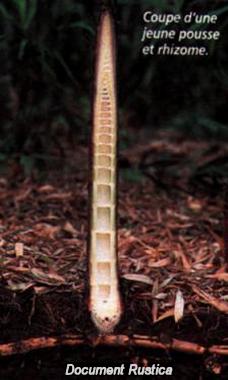 |
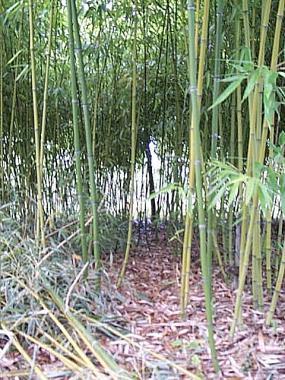 |
The bamboo blooms exceptionally well (producing a kind of light green flowers like oat, barely noticeable). It is said that all bamboo issued from the same stump bloom the same year, and die by depletion. However, I have witnessed a clump (average bamboo) blooming in 1996. Indeed, all the stalks had dried up, but two years later, I saw new stalks growing and the bamboo came back to life.
In my park, we can see three varieties of bamboo:
In the center, a large clump planted in 1995: Giant variety "Phyllostachys viridi glaucescens", potential
height 20 to 40 feet, diameter 2 to 3 inches. Last year's stalks reach about 25 feet.
Another small clump, planted the same year, but having bloomed and being subjected to a three years interruption:
Medium variety "Phyllostachys flexuosa" height 20 to 30 feet, thick diameter 1 to 2 inches.

In the autumn of 1999, I brought back
a third giant variety from Anduze; "Phyllostachys viridis sulfurea", height 40 to 60 feet, diameter 2
to 4 inches. Now, after two years of growth, it is far from those projected results! (Center photo below).
Having planted all those bamboo between the trees, I don't expect to see them grow to the dimensions advertised
in the catalogs… Trees and bamboo are in competition! Only the last plantation, which is located at the border
of the park, benefits from more vital space. Furthermore, I did not thin the stalks enough to give them more vitality.
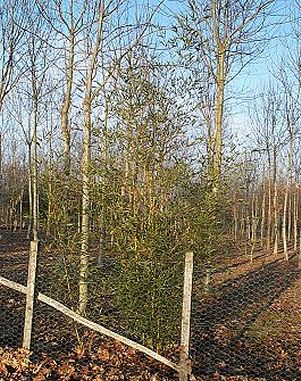 |
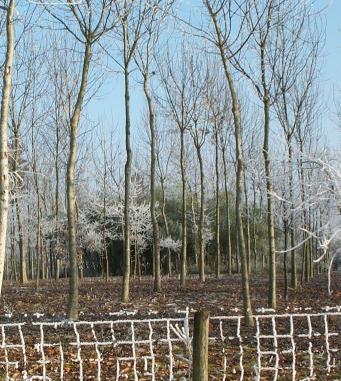 |
The use of bamboo is very varied, according to the varieties,
and the countries where it is used. Some varieties produce young stalks, which are much appreciated as food. Giant
varieties are a commonly used material in Asia. We often can see very impressive scaffoldings made of giant bamboo
attached with vines. In Indochina (Vietnam) houses such "paillotes" (huts) are built entirely with bamboo.
It is used also as pipes for canalization, for basket making, utensils, boats, fences etc.
The midget varieties are used as components for edging. In the French countryside, it is used in various ways…stakes
for plants, fences, fishing rods (without the risk of electrocution), hedges and ornaments.
![]()